|
Home
Research
Dr. Park
Publications
Group Members
Teaching
Image Gallery
Resources
Contact Us
|
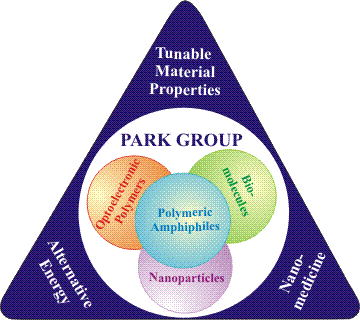
|
Research Highlights: The Park Group, University of Pennsylvania
Controlling Materials Properties through the Self-Assembly of Nanoparticles, Conjugated Polymers, and DNA
The Park groupís research focuses on developing methods to control the organization of nanoparticles and polymers and to construct
functional hybrid materials with controllable structure and properties. Inspired by the nature, we utilize the self-assembly of amphiphiles
as the architectural tool to control the arrangement of nanoparticles and polymers of various compositions (e.g., insulating polymers, conjugated polymers, and
biopolymers). Our primary interest is to learn how to manipulate the properties of inorganic nanoparticles, optoelectronic polymers, and DNA through
the self-assembly. Below are some recent examples of how we use the self-assembly to control materials properties.
|
1. Self-Assembly of Nanoparticles and Amphiphilic polymers
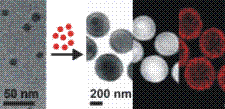
|
Superparamagnetic Polymersomes
We developed polymersomes densely packed with magnetic nanoparticles.
They show enhanced magnetic relaxivities compared to typical micellar structures. [JACS, 2011 , In press.]
|
2. Self-Organizing Conjugated Polymers with Tunable Optical Properties
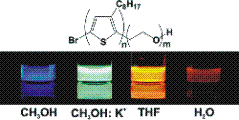
|
Amphiphilic Conjugated Block-copolymers
The photoluminescent colors of block-copolymers composed of polythiophene and poly(ethylene oxide)
can be drastically tuned from blue to red by controlling their self-assembly structures. [JACS, 2010 , 132, 9931]
|
3. DNA Block-Copolymer Assemblies with Enhanced DNA Binding Properties
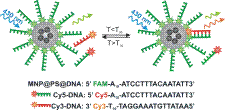
|
Self-Assembly of Nanoparticles and DNA Block-copolymers
Nanoparticle-encapsulating DNA block-copolymer assemblies show drastically enhanced molecular recognition properties.
They bind to the complementary DNA at extremely low salt concentrations where normal DNA strands do not form duplexes. [Small, 2010, 6, 2256]
|
4. Spiky Metal Nanoshells
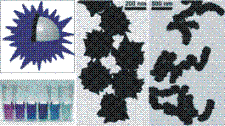
|
Spiky Gold Nanoshells of Varying Shapes from Block-copolymer Templates
We developed a high yield synthetic method for a new type of metal nanoshells with protruding sharp spikes.
They exhibit enhanced near field and far field scattering compared to smooth shells. [Langmuir 2010, 26, 19170]
|
|

